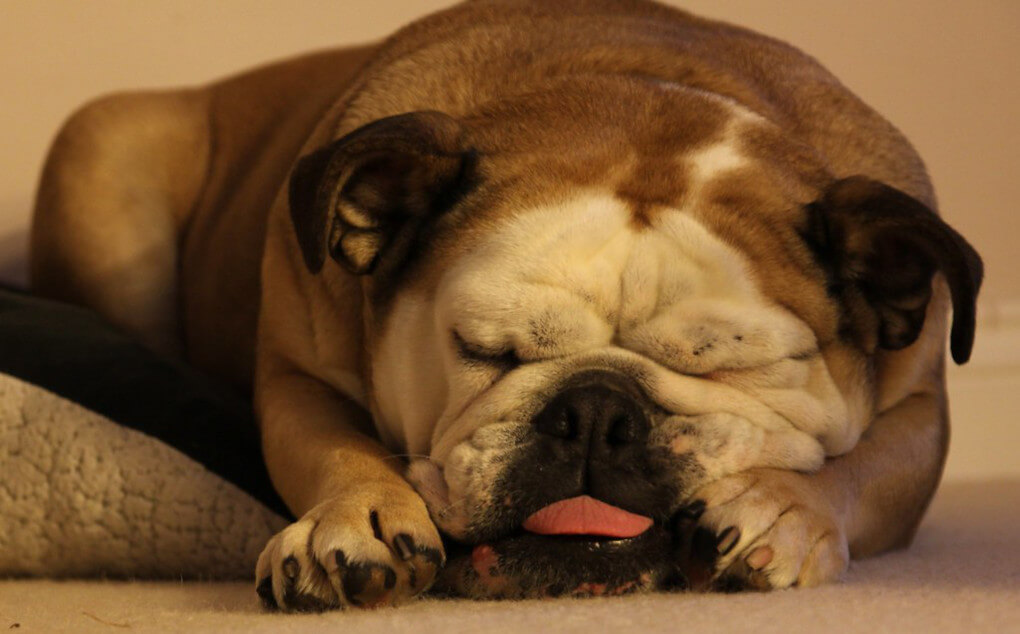When the seasons shift, so do our routines and routine behaviours. In the summer, you might not think twice about taking your dog for a brisk walk outside, but in the dead of winter, you might need a lot more encouragement to bundle up and go for regular walks. In a similar vein, people are less likely to take full advantage of the outdoors when it’s cold out. As a result, you and your furry companion could end up with more insulation than necessary this winter.
Calculating Intake and Exhaustion Rates
The scientific knowledge behind seasonal weight gain is straightforward: because we and our animals become less productive in the winter, we tend to comfort eat more to feel full and stay warm. Our caloric intake will inevitably exceed our energy expenditure. While Rollo the german shepherd begs for a bite while you target an extra rusk for your tea, we do not doubt that you will give in and offer him a dog treat, too.
Added Fluff?
It’s easy to rationalize your pet’s weight gain as an essential wintertime insulation measure, but doing so is a surefire way to ensure that your pet ends up overweight. Outdoor working dogs that inhabit colder regions, such as the Siberian husky and the Alaskan malamute, have evolved processes in their bodies that enable them to remain warm and energized despite the low environmental temperatures. While dogs of working and athletic breeds may require more food in the winter due to their increased activity levels while outside, the ordinary house pet diva doesn’t. When it gets cold outside, your overindulged spaniel or plump pug won’t have to bulk up; instead, he can snuggle up in a cozy blanket or one of your hand-knit doggy sweaters.
Cats, However, Are a Little Bit Unusual

In the summer and the winter, cats revert to a more primal pattern of eating. They reduce their food intake by about 15% during the summer, and their activity level also drops significantly. However, cats eat more during the colder months to sustain the increased activity level necessary to keep warm. According to studies conducted by the University of Liverpool, seasonal changes in their food consumption mirror seasonal shifts in their activity levels. Even though South African winters aren’t as harsh compared to the northern latitudes, it’s still essential to track your cat’s food intake and weight/body condition year-round.
A Solution to the Problem of Winter Weight Gain
As with humans, it’s important to keep an eye on your pet’s weight. Your veterinarian can evaluate your pet’s weight using a body condition score (BCS) graph and guide a weight control plan to help your pet reach a healthy weight if you’re worried about their health. Treats for your dog or cat should be given in addition to their regular mealtimes, so be sure to follow the feeding guidelines on the food package and those of your vet. You can help your fur child stay fit and healthy all winter long by following these guidelines.
Consult Your Veterinarian for a Pre-winter Checkup
Learning your dog’s current weight is the first step in keeping tabs on its health. Find out if your dog has any underpinning conditions that could lead to weight gain at the annual checkup. Your veterinarian can help you and your dog reach its ideal weight, establish healthful fitness goals, and provide advice on how to stay active during the colder months. As an added convenience, you can quickly assess your dog’s health right at home.
It’s best to start the season with less sugary food. It’s challenging, but refraining from giving your dog crumbs and frequent treats during the holidays is essential. A dog’s excess weight in the winter is similar to that of a human, as there is food everywhere. By placing restrictions on treats at a young age, you can prevent your dog from developing a table manners problem and you can reduce the excess calories that can quickly lead to obesity.
Exercise Routines for Dogs Should Be Adjusted
Long walks in the cold can be challenging for both you and your dog if you reside in a cold environment during the winter. Keep your dog from getting too cold by taking shorter, more regular walks on extremely cold days.
Use Your Imagination and Stay Inside
If going outside is not an option, try playing games of chase with your dog all around the house (cautiously, of course) or challenging your dog with puzzles and brain teasers. To enable your dog to feel fuller for longer and decrease their begging, we suggest extending feeding times with food puzzles or “slow bowl” feeders.
Take Into Account the Changing Seasons When Deciding What to Feed Your Dog
Your dog may experience some difficulties and adjustments this winter. It’s possible your dog won’t require as many calories during the winter unless they’re used to being more active in the cold. Your vet should always have your dog’s most up-to-date information on hand when you make a custom dog food blend for them. This helps them ensure that your dog is getting the right amount of calories every day, no matter the season. The mix will be adjusted to assist with any seasonal skin dryness.
Keeping Busy is the Key to Keeping Warm
Although it may be difficult to go out for walks or play with your cat when the temperature drops, you shouldn’t skip these activities just because it’s winter. It’s easier to simply get out there and exercise rather than try to undo the damage caused by weight gain. Remember that staying active and energized in the winter is good for both you and your animals. As a bonus, you and your animals will stay toasty warm if you keep moving around during the winter.

